Canon has just announced a new, more affordable entry camera body into its R mirrorless camera system. Alongside the full-frame EOS R8, the company unveiled today the EOS R50, an APS-C RF mount camera that will start at $680 when it goes on sale later this year. Based on the price and spec sheet, the R50 could quickly become a go-to for many beginners.
Canon’s ground-breaking mirrorless EOS R System was introduced in 2018 and has subsequently grown. The EOS R7 and EOS R10, the first APS-C sensor versions in the lineup, were introduced in 2022 and quickly gained popularity among photographers looking for a camera with EOS R System features in a smaller chassis.
With the release of the Canon EOS R50, in early 2023, which offers the same excellent image quality and power as the EOS R10 but in an even more compact and simple body for creators who want to move beyond their smartphones to elevate their YouTube tutorials.
In this article, we are going to review the Canon EOS R50 and compare it with the Canon EOS R10
Canon EOS R50 Highlights
The Canon EOS R50 is an entry-level APS-C mirrorless hybrid. It features a 24.2MP APS-C CMOS Sensor, a DIGIC X Image Processor, Dual Pixel CMOS AF II with 651 Zones, and the ability to record internally in up to UHD 4K 30p.
- 24.2MP APS-C CMOS Sensor
- DIGIC X Image Processor
- UHD 4K 30p Video Recording
- Dual Pixel CMOS AF II with 651 Zones
- 36m-Dot Electronic Viewfinder
- 3.0″ 1.62m-Dot Vari-Angle Touchscreen
- 15 fps Electronic Shutter
- Movie for Close-Up Demos Mode
- Vertical Movie Mode
- Multi-Function Shoe, Wi-Fi, and Bluetooth
Canon EOS R50 Overview
-
User Suitability
If you’re using an interchangeable lens camera for the first time, and you are familiar with taking photos and videos from a smartphone and want something that can automatically take high-quality photos and videos, then the EOS R50 is best suited for you.
Its small size, intuitive design, and powerful features make it an ideal choice for those who want professional-level results without having to lug around bulky equipment.
-
Weight & Size
Size and weight are big deciding factors when you are trying to find the ideal camera for your needs. Canon R50 has external dimensions of 116 x 86 x 69 mm (4.57 x 3.39 x 2.72″) and weighs 375 g (0.83 lb / 13.23 oz) (including batteries).

-
Ergonomic Operability & Interfaces
If you’re a first-time camera user, the EOS R50 features smartphone-style operability with touch, drag, swipe, and pinching in and out. The camera also has a Shooting Mode Guide that teaches you to use a variety of functions with clear visual guidance. It works with familiar steps to give you a quick, intuitive, and simple guide to controls and settings.
-
Still Image Quality
With the 24.2 megapixels, APS-C sized CMOS sensor, and DIGIC X image processor, the R50 delivers high-resolution imagery with striking and accurate colors. Designed to work in a variety of lighting conditions, this camera offers a flexible ISO 100-32000 range that is expandable to ISO 51200 for working in difficult lighting conditions. It allows users to capture stunning images with great detail in both stills and video formats up to UHD 4K 30p resolution. Advanced automatic modes ensure that even novice photographers can get amazing shots with minimal effort required on their part.
General spec
| Lens Mount | Canon RF |
|---|---|
| Sensor Resolution | Effective: 24.2 Megapixel |
| Sensor Type | 22.3 x 14.9 mm (APS-C) CMOS |
| Crop Factor | 1.6x |
| Image Stabilization | None |
| Built-In ND Filter | None |
| Capture Type | Stills & Video |
Exposure specs
| Shutter Type | Electronic Shutter |
|---|---|
| Shutter Speed | Electronic Shutter |
| 1/8000 Up to 30 Seconds | |
| Electronic Front Curtain Shutter | |
| 1/4000 Up to 30 Seconds | |
| Bulb/Time Mode | Bulb Mode, Time Mode |
| ISO Sensitivity | Photo/Video |
| 100 to 32,000 (Extended: 51,200) | |
| Metering Method | Center-Weighted Average, Evaluative, Partial, Spot |
| Exposure Modes | Aperture Priority, Manual, Program, Shutter Priority |
| Exposure Compensation | -3 to +3 EV (1/3 EV Steps) |
| Metering Range | -2 to 20 EV |
| White Balance | Presets: Auto, Cloudy, Color Temperature, Custom, Daylight, Flash, Fluorescent (White), Shade, Tungsten |
| Continuous Shooting | Electronic Shutter |
| Up to 15 fps for up to 28 Frames (JPEG) / 7 Frames (Raw) | |
| Electronic Shutter | |
| Up to 12 fps for up to 42 Frames (JPEG) / 7 Frames (Raw) | |
| Interval Recording | Yes |
| Self-Timer | 2/10-Second Delay |
-
Autofocus
The advanced Dual Pixel CMOS AF II system provides fast, accurate focusing performance. It Features 651 high-precision autofocus zones, this phase-detection focusing system offers enhanced subject detection and tracking, with the ability to intelligently recognize people, animals, and vehicles while automatically locking onto these subjects and maintaining sharp focus throughout bursts and video captures.

Focus spec
| Focus Type | Auto and Manual Focus |
|---|---|
| Focus Mode | Continuous-Servo AF, Manual Focus, Single-Servo AF |
| Autofocus Points | Photo: Phase Detection: 4503 |
| Video: Phase Detection: 3713 | |
| Autofocus Sensitivity | -4 to +20 EV |
-
Video Recording
With video recording features such as uncropped UHD 4K movie recording at up to 30 fps, Full-HD High-frame rate movie recording at up to 120 fps, Dual Pixel CMOS AF tracking, and Movie for Close-up Demo Mode, the R50 camera makes vlogging and video content creation simple and convenient.
The camera also lets you continuously record video for up to 1 hour, allowing you to set up your video and keep your vlog, podcast, or other video project rolling without worrying about it stopping.
The R50 mirrorless camera features a Movie for Close-Up Demos Mode. This mode quickly switches focus from the on-camera subject to an object that is presented towards the camera’s lens, ideal for movies where showing a product to the viewers is necessary such as in makeup demos or cooking videos.
In addition, the Movie rotation information can be set during or after movie recording, allowing videos to be played in vertical composition when viewed on a smartphone. The Aspect Markers function displays visual markers for different aspect ratios that may be desired for posting the same file to various social media sites. This display provides consideration for proper composition for the different deliverable files that can be created when editing.
Video spec
| Internal Recording Modes | H.264/H.265/MPEG-4 |
|---|---|
| UHD 4K (3840 x 2160) at 23.98/25/29.97 fps | |
| 1920 x 1080 at 23.98/25/29.97/50/59.94/100/120 fps | |
| Broadcast Output | NTSC/PAL |
| Built-In Microphone Type | Stereo |
-
Vari-angle LCD
Canon EOS r50 has a fully articulating rear touchscreen.

LCD spec
| Size | 3" |
|---|---|
| Resolution | 1,062,000 Dot |
| Display Type | Articulating Touchscreen LCD |
-
Viewfinder (EVF)
The viewfinder is a relatively modest 2.36M dot OLED display with a rather low 0.59x magnification level (which means it appears pretty small)
EVF spec
| Type | Built-In Electronic (OLED) |
|---|---|
| Size | 0.39" |
| Resolution | 2,360,000 Dot |
| Eye Point | 22 mm |
| Coverage | 1 |
| Magnification | Approx. 96x |
| Diopter Adjustment | -3 to +1 |
-
Connectivity
Wired and wireless connectivity options allow for multiple methods of transferring photos and videos, live streaming, as well as for remotely controlling the camera.
The camera features the following:
A USB-C port, a micro-HDMI port, and a microphone port for video recording.
- UVC/UAC compatibility allows the R50 camera to be used as a web camera to stream live video in Full HD without additional computer software.
- Built-in Bluetooth pairing lets you easily connect the camera to compatible smart devices using the free Canon Camera Connect app. This low-energy wireless connection helps preserve battery life while providing remote control of the camera. It also sends continuously updated GPS location data from your phone, letting you geotag what you’ve captured so you know precisely where you captured the photo.
- Built-in Wi-Fi connectivity enables quick and seamless wireless functions, such as remote live view, file viewing, and transfer. Using the Canon Camera Connect app, you can also transfer files to your mobile device to browse and share on social media.
- Built-in USB-C allows you to connect the camera to a smartphone or computer. All Canon Camera Connect app features that can be used with Wi-Fi are now available when the camera and smartphone are connected via USB, using a compatible cable for your device.
Connectivity spec
| Media/Memory Card Slot | Single Slot: SD/SDHC/SDXC |
|---|---|
| Video I/O | 1 x Micro-HDMI Output |
| Audio I/O | 1 x 1/8" / 3.5 mm TRS Stereo Microphone Input on Camera Body |
| Other I/O | 1 x USB-C Input/Output |
| Wireless | 2.4 / 5 GHz Bluetooth 4.2 Control |
| Mobile App Compatible | Yes |
| Global Positioning (GPS, GLONASS, etc.) | None |
-
Pop-Up Flash & Multi-Function Shoe
A built-in pop-up flash provides additional illumination for working in low-light conditions, and the camera’s Multi-Function Shoe adds a row of pins at the front of the design to permit greater accessory functionality. This next-generation shoe also provides power to select accessory types that traditionally rely on separate batteries.
Flash spec
| Built-In Flash | Yes |
|---|---|
| Maximum Sync Speed | 1/250 Second |
| Flash Compensation | -3 to +3 EV (1/3 EV Steps) |
| Dedicated Flash System | eTTL |
| External Flash Connection | Intelligent Hot Shoe |
-
Battery
The EOS R50 uses the same LP-E17 battery, In standard (‘Smooth’) mode the camera is rated to deliver a respectable 370 shots per charge if you use the LCD but just 230 shots through the viewfinder. Energy saver mode boosts the numbers to 440 and 310 shots, respectively.
-
Availability
The Canon EOS R50 is now available to pre-order. It won’t start shipping until late April. The EOS R50 retails for $680 USD.
Canon R50 vs. Canon R10
At $680 for body-only, the R50 slots under the EOS R10, which was previously Canon’s most affordable RF mirrorless camera. It’s also competitive against Sony’s ZV-E10 and Nikon’s Z30, which cost about the same but don’t offer an electronic viewfinder.
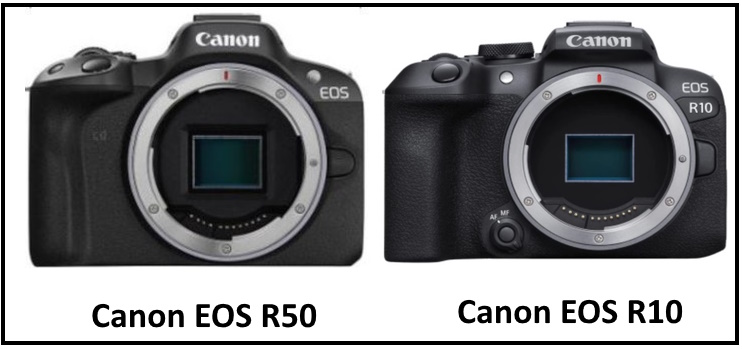
| EOS R50 | EOS R10 | ||
|---|---|---|---|
| Megapixels | 24.2 | 24.2 | |
| Image Processor | DIGIC X | DIGIC X | |
| ISO Speed | 100-32000 | 100-32000 | |
| Continuous Shooting Speed | 15 shots/sec | 23 shots/sec | |
| Movie Recording Size | 4K 30p (6K oversampling uncropped) | 4K 60p (cropped) / 4K 30p - (6K oversampling uncropped) | |
| High Frame Rate Movie | Full HD 120p (uncropped) | Full HD 120p (uncropped) | |
| Movie Focus Method | Dual Pixel CMOS AF II | Dual Pixel CMOS AF II | |
| Movie Modes for Vlogging | Movie for close-up demos Mode /Movie IS Mode | ||
| Subject Detection | People (eyes/face/head/body) / | People (eyes/face/head/body) / | |
| Animals (dogs, cats, birds) / | Animals (dogs, cats, birds) / | ||
| Vehicles (cars, motorcycles) / | Vehicles (cars, motorcycles) | ||
| Scene Intelligent Auto | Creative Assist / Advanced A+ /Creative Bracket | Creative Assist | |
| Monitor | Vari-angle 3.0" touchscreen | Vari-angle 3.0" touchscreen | |
| Approx. 1.62 million dots | Approx. 1.04 million dots | ||
| Battery life | LP-E17 (1040mAh) | LP-E17 (1040mAh) | |
| Approx. 310 shots (with finder) | Approx. 260 shots (with finder) | ||
| Approx. 440 shots (with monitor) | Approx. 430 shots (with monitor) | ||
| Dimensions | 116.3 x 85.5 x 68.8mm | 122.5 x 87.8 x 83.4mm | |
| Weight | 375g | 429g |
Conclusion
The EOS R50 is designed for users whose smartphone is their main experience of photography. The R50 does a pretty good job of taking attractive photos with limited need for user intervention. It provides an interface that’s both relatively easy to use and that tries to guide the user as they make adjustments.
There’s a pretty neat separation between this model and the R10, quite aside from the cost difference. The R10 has twin dials, and more buttons and makes clear that the expectation is you’ll take control of all its functions. By contrast, the R50 seems happiest if you devote yourself to finding the photo you want to take, and letting the camera do the rest, clever AF and all.
Related posts
The Best Canon Camera For Beginner- EOS R10 Review
Canon R7 Vs R10- New Lineup RF Mount APS-C Cameras
Thanks for reading, I hope you enjoyed the article, in case you have any questions just drop them below & I will be happy to answer you.
If you enjoy the site, don’t forget to subscribe, we will only inform you when a new article is posted.







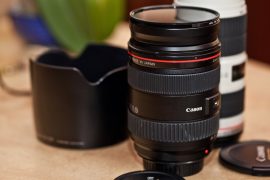
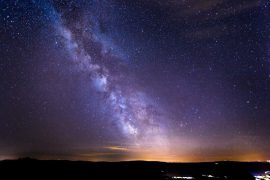
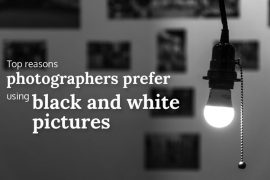
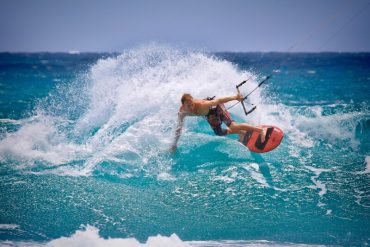
I’ve been looking to move over from my smartphone photography to a good affordable camera for by blogs and YouTube videos. The Canon EOS R50 with the electronic view-finder scores better over Sony’s ZV-E10. Only problem is that I can get it only after Aril 2023.
But I am OK to wait for it as it gives me an edge with 1 hour of uninterrupted video recording for my tutorials.
What a great review explaining each aspect of the camera in such great details. Thanks for sharing.
Regards,
Rohit
I agree with you, I think it is worth waiting, Thank you for your comment
I think the Canon EOS R50 sounds like a good option for someone who is just starting out with photography or looking for a more affordable camera. The 30.3-megapixel sensor and compatibility with RF lenses are impressive features, and the vari-angle touchscreen and autofocus make it user-friendly. Overall, it seems like a great camera for the price.
But no matter what the other says about camera reliability, my goto camera is still my phone. And in the future, I will still buy mobile phones with great camera features
Thanks for your comment.